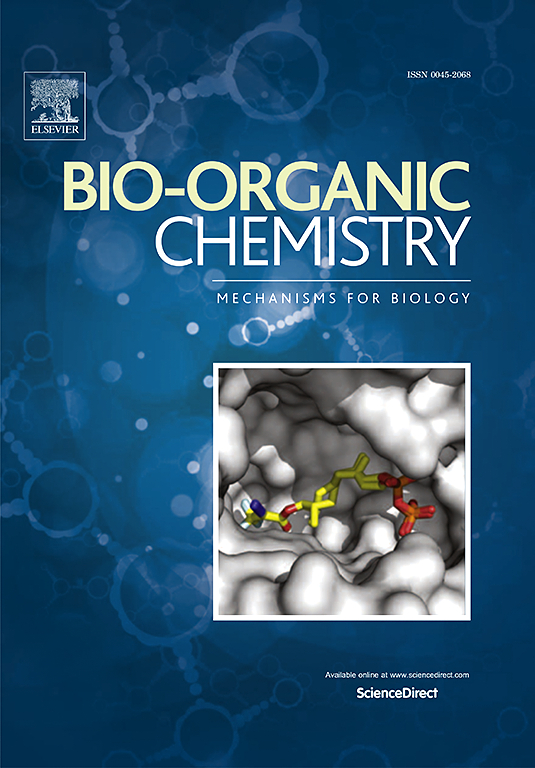S-adenosylmethionine inhibits non-small cell lung cancer and enhances chemosensitivity by targeting the P62/NF-κB axis and regulating autophagy and oxidative stress
IF 4.5
2区 医学
Q1 BIOCHEMISTRY & MOLECULAR BIOLOGY
引用次数: 0
Abstract
Non-small cell lung cancer (NSCLC) is a leading cause of cancer-related deaths worldwide. Despite advances in targeted therapies and immunotherapy, which have improved survival rates, drug resistance and immune-related side effects continue to necessitate the development of new treatments. S-adenosylmethionine (SAM), a key metabolite in the methionine cycle, has indicated potential for cancer therapy and enhancing chemotherapy sensitivity. However, its effects on NSCLC remain undetermined. In our study, SAM inhibits NSCLC growth and enhances chemosensitivity both in vitro and in vivo. Mechanistic investigations revealed that SAM plays a significant regulatory role in autophagy and oxidative stress within NSCLC. Furthermore, we identified P62 as a critical target of SAM by constructing biotin-labeled SAM for immunocoprecipitation-mass spectrometry. Both in vitro and in vivo studies confirmed that P62 mediates SAM regulatory effects on NSCLC. Furthermore, by constructing truncated P62 expression plasmids for immunocoprecipitation experiments, we discovered that SAM inhibits the NF-κB signaling pathway by directly targeting the ZZ and TB domains of the P62 protein, thereby blocking autophagy and activating oxidative stress. These findings highlight SAM as a novel inhibitor of the P62/NF-κB axis and suggest that SAM could be a potential therapeutic agent for NSCLC.

s -腺苷蛋氨酸通过靶向P62/NF-κB轴调控自噬和氧化应激,抑制非小细胞肺癌,增强化疗敏感性
非小细胞肺癌(NSCLC)是全球癌症相关死亡的主要原因。尽管靶向治疗和免疫治疗取得了进展,提高了生存率,但耐药性和免疫相关副作用仍然需要开发新的治疗方法。s -腺苷蛋氨酸(SAM)是蛋氨酸循环中的关键代谢物,已显示出治疗癌症和提高化疗敏感性的潜力。然而,其对非小细胞肺癌的影响仍不确定。在我们的研究中,SAM在体外和体内均能抑制NSCLC的生长并增强化疗敏感性。机制研究表明,SAM在非小细胞肺癌的自噬和氧化应激中起着重要的调节作用。此外,我们通过构建生物素标记的SAM进行免疫共沉淀-质谱分析,确定了P62是SAM的关键靶点。体外和体内研究均证实P62介导SAM对NSCLC的调控作用。此外,通过构建截断的P62表达质粒进行免疫共沉淀法实验,我们发现SAM通过直接靶向P62蛋白的ZZ和TB结构域抑制NF-κB信号通路,从而阻断自噬,激活氧化应激。这些发现表明SAM是一种新的P62/NF-κB轴抑制剂,并提示SAM可能是一种潜在的非小细胞肺癌治疗剂。
本文章由计算机程序翻译,如有差异,请以英文原文为准。
求助全文
约1分钟内获得全文
求助全文
来源期刊

Bioorganic Chemistry
生物-生化与分子生物学
CiteScore
9.70
自引率
3.90%
发文量
679
审稿时长
31 days
期刊介绍:
Bioorganic Chemistry publishes research that addresses biological questions at the molecular level, using organic chemistry and principles of physical organic chemistry. The scope of the journal covers a range of topics at the organic chemistry-biology interface, including: enzyme catalysis, biotransformation and enzyme inhibition; nucleic acids chemistry; medicinal chemistry; natural product chemistry, natural product synthesis and natural product biosynthesis; antimicrobial agents; lipid and peptide chemistry; biophysical chemistry; biological probes; bio-orthogonal chemistry and biomimetic chemistry.
For manuscripts dealing with synthetic bioactive compounds, the Journal requires that the molecular target of the compounds described must be known, and must be demonstrated experimentally in the manuscript. For studies involving natural products, if the molecular target is unknown, some data beyond simple cell-based toxicity studies to provide insight into the mechanism of action is required. Studies supported by molecular docking are welcome, but must be supported by experimental data. The Journal does not consider manuscripts that are purely theoretical or computational in nature.
The Journal publishes regular articles, short communications and reviews. Reviews are normally invited by Editors or Editorial Board members. Authors of unsolicited reviews should first contact an Editor or Editorial Board member to determine whether the proposed article is within the scope of the Journal.
 求助内容:
求助内容: 应助结果提醒方式:
应助结果提醒方式:


